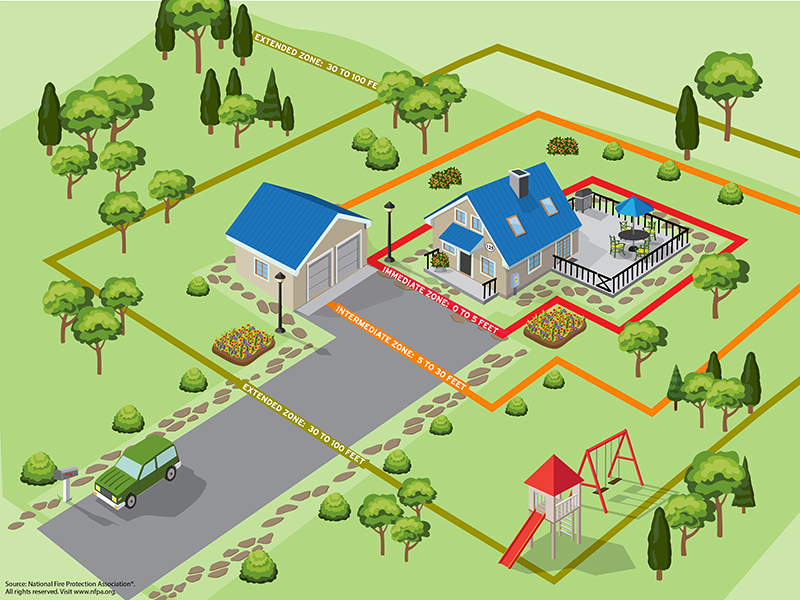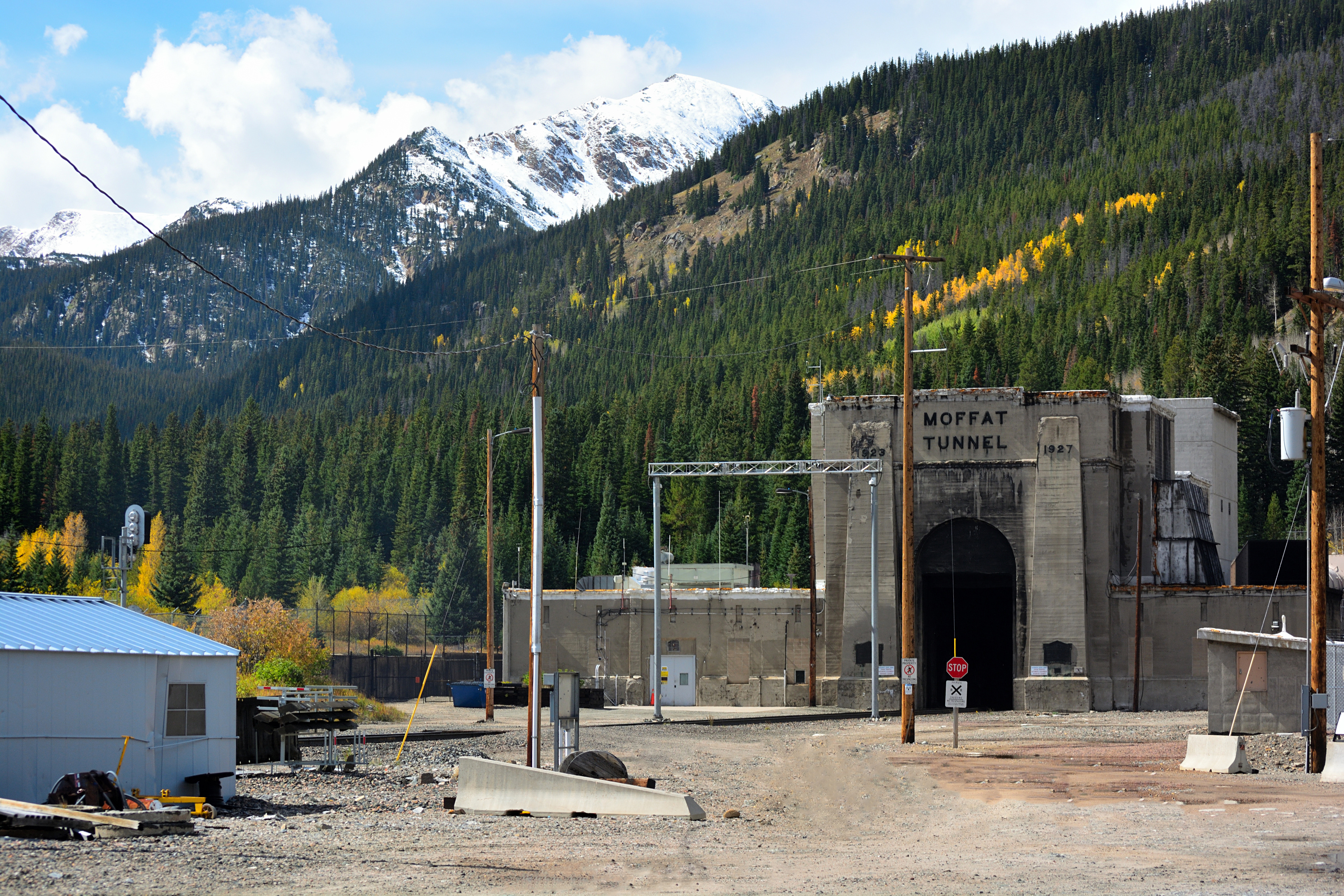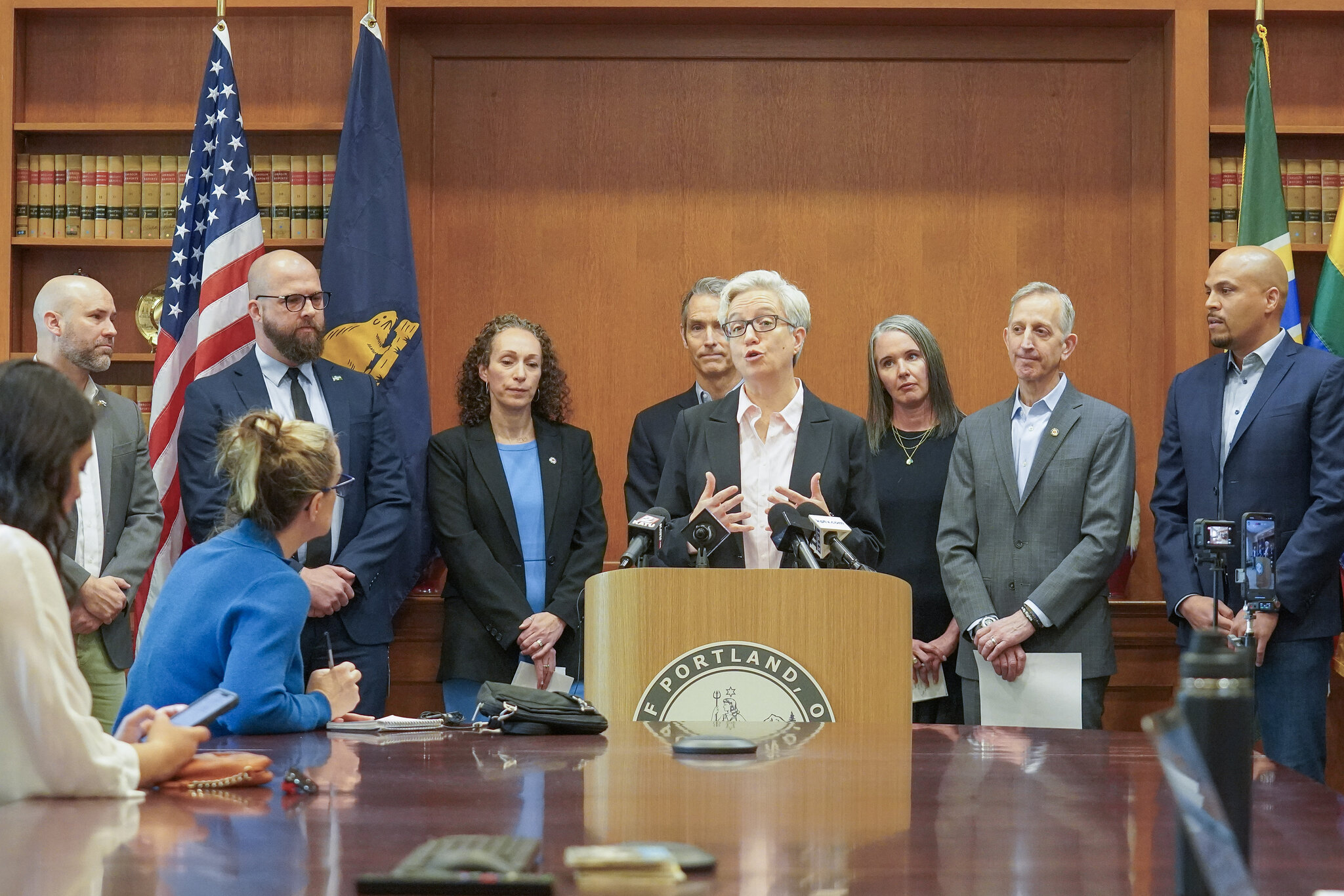05/08/25
Best of the West: Building wildfire-adapted communities; CO passenger rail; Western fentanyl bust; WY geothermal greenhouse; NV economic development; OR housing plan

The Western Governors' Association keeps you updated on the latest news in the West. Here are the top stories for the week starting May 5, 2025. (Photos courtesy of Adobe Stock Images, Sonoma County, California, the National Fire Protection Association (NFPA), and the Office of Oregon Governor Tina Kotek).
When devastating wildfires descend on western communities, it’s not uncommon for certain houses or structures to seemingly miraculously escape the destruction around them.
In Lahaina, Hawaii, in 2023, one “miracle house” stood unscathed on its waterfront plot, surrounded by the burnt shells of houses around it. In Los Angeles this year, a number of houses remained improbably untouched by the fires there, which were some of the most destructive in the state’s history.
While it’s important to note that all of these examples owe a great deal to luck, wind direction, and the tireless work of firefighters, some surviving homes can help provide a window into how home hardening techniques and pre-fire mitigation strategies may help buffer communities against the worst of wildfire.
In reporting from National Geographic, experts caution against focusing on individual homes and instead suggest community-scale techniques to make cities and towns more resilient against wildfire.
A new subdivision in California claims to be the nation’s first “wildfire resilient neighborhood” with each home built with heat-resistant windows, mesh enclosed gutters, flame-resistant materials, and all the other necessities to meet the wildfire resilience standards set by the Insurance Institute for Business and Home Safety.
In efforts to develop fire resiliency in existing neighborhoods and communities, western states and their Governors are promoting efforts to harden homes and communities against wildfire through a range of legislation and incentives.
In Montana, the Department of Natural Resources and Conservation recognizes that fire is a part of life in the state, and it implores residents to remove flammable materials from their property, create a buffer of up to 200 feet around homes, and retrofit homes with non-combustible materials. The DNRC provides free wildfire risk assessments to homeowners to determine risk and recommend specific actions to residents and communities.
DNRC provides free wildfire risk assessments to homeowners to determine risk and recommend specific actions to residents and communities.
In Colorado, the state's new Wildfire Resiliency Code Board is working to ensure community safety by developing statewide wildfire codes and standards to prepare for fire and reduce risk in fire-prone areas.
Other states like California, Nevada, Oregon, and Utah have some existing building codes and standards on the books, often to ensure new construction meets certain wildfire resiliency standards in fire-prone areas.
In Idaho, a report from Governor Brad Little’s office recommended exploring building codes in the wildland-urban interface and pursuing community engagement to adopt or amend codes.
A new strategy in Oregon – announced last week – sets up a partnership between the state and the insurance industry, which awards homeowners with certificates for wildfire mitigation work done on their homes. That work is then incorporated into insurance rates and premiums, helping bring down the skyrocketing cost of insurance in fire-prone areas.
Nationally, Senators Alex Padilla of California and Steve Daines of Montana recently introduced legislation to address wildfire preparedness efforts, including programs to help households make wildfire-hardening retrofits.
Read Western Governors’ policy resolution on disaster preparedness and response to learn more about the Governors’ perspective on mitigation and preparedness before disasters like wildfire.
Colorado passenger rail: this week, Colorado Governor Jared Polis and Union Pacific Railroad President Beth Whited signed a historic lease agreement for Colorado’s Moffat Tunnel that could soon lead to increased passenger rail service between Denver and the mountain towns of Winter Park, Granby, Steamboat Springs, and Craig.
agreement for Colorado’s Moffat Tunnel that could soon lead to increased passenger rail service between Denver and the mountain towns of Winter Park, Granby, Steamboat Springs, and Craig.
The agreement includes a 25-year access agreement for Mountain Passenger Rail, which includes a license for three daily round trips between Denver and mountain communities. The state plans to start year-round daily trips to Granby in 2026.
“Moffat Tunnel represents an important part of Colorado’s history, as well as a bright part of our future. With this work, we are showing the country a new model for pursuing passenger rail through collaboration with the railroad. I am thrilled with the three new agreements and look forward to seeing the positive benefits to our state,” said Governor Polis.
Western fentanyl bust: on Tuesday, officials with the Drug Enforcement Agency announced the single largest seizure of fentanyl pills in the Agency’s history in an operation that spanned five western states.
Agents from the DEA Albuquerque District Office seized 2.7 million fentanyl pills in Albuquerque, New Mexico after a monthslong investigation that also executed search warrants and seizures in Arizona, Nevada, Oregon, and Utah.
To read more about Western Governors’ bipartisan policy on fentanyl and opioids, read WGA Policy Resolution 2024-04, Combating the Opioid Crisis.
Geothermal greenhouses: geothermal heating and cooling is becoming increasingly popular for growing fruits and vegetables year-round in specially engineered greenhouses.
A Wyoming couple tells Cowboy State Daily that they are able to grow everything from lemons, grapefruits, and pomegranates to spinach and lettuce in their greenhouse all year, even through harsh Wyoming winters.
A simple ground-source geothermal system under their greenhouse heats the space in the winter and cools it in the summer, keeping their 1,836-square-foot growing space suitable for a wide range of crops.
Read more about Western Governors’ work on geothermal in the Heat Beneath Our Feet initiative report.
Lombardo economic development plan: in Nevada, Governor Joe Lombardo unveiled his economic development plan for the state, which focuses on workforce development, infrastructure investment, environmental sustainability, new child care tax credits, and industry diversification.
The plan would set aside $12 million in tax credits to build or expand child care facilities in the state, which has faced challenges with child care access in recent years.
The proposal also includes tax abatements for high-tech clean energy, defense, health care technology, and manufacturing organizations, while also incentivizing new energy sources like biofuels. Other key pillars of the plan include infrastructure and rural housing programs and workforce development initiatives.
Read more about the Governor’s plan in reporting from The Nevada Independent.
Housing in Oregon: in Oregon, Governor Tina Kotek and Portland Mayor Keith Wilson announced a new city initiative last week to develop 5,000 new housing units in the city. The initiative will waive System Development Charges in Portland until 5,000 units are built, or three years have passed.
“Portlanders are impatient for more progress on the city’s housing supply crisis. So am I, and so is the Mayor,” said Governor Kotek. “Even in tight budget times, we need to get creative and try new things. We have to put our whole weight behind building Portland into the vibrant, safe, and prosperous city we know it can be.”
Learn more about Western Governors’ work on housing through New Mexico Governor Michelle Lujan Grisham’s Chair initiative, BRAND West. The Governor’s initiative this year also featured essential policy workshops hosted by Governor Kotek in Bend, Oregon, and Utah Governor Spencer Cox in Salt Lake City. Watch those workshops here.